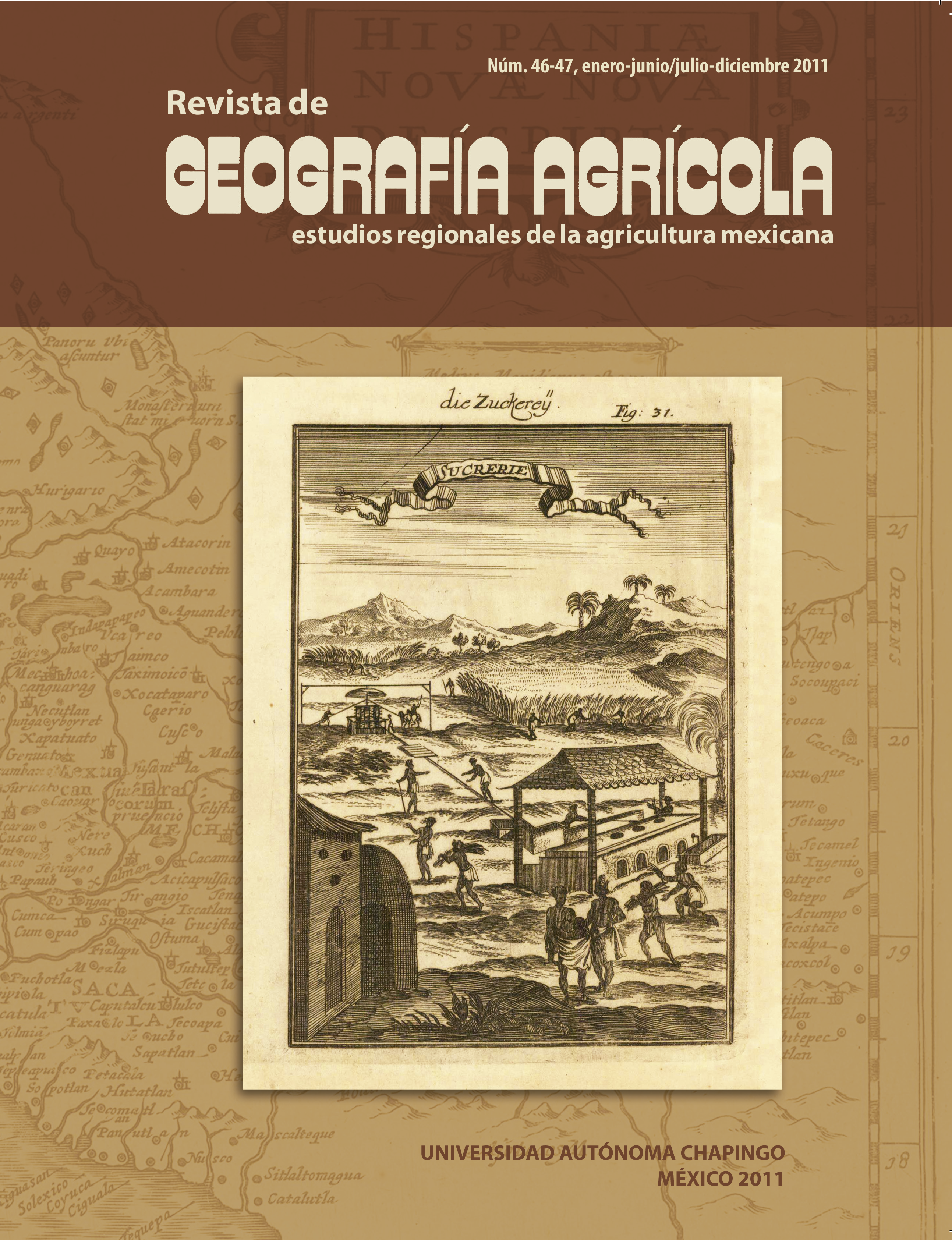Abstract
Coffee is an important crop in Mexico even without being originally from our country. This crop is part of the productive culture of the Mexican subtropical regions. In the past decade the coffee sector was immersed in a deep economic crisis. As a response to this situation in the coffee sector, some alternatives were implemented, among them: improvement of coffee quality and production of differentiated coffee. In this context the organization ‘Campesinos Ecológicos de la Sierra Madre de Chiapas S.C.’ stated that it was necessary to develop research to identify the qualities and profiles of coffee flavor in order to strengthen its presence in the different markets. A database integrated by the Technical Department of this organization built in 2009 was used in this piece of research. By applying an analysis of correlation, and t, χ2 tests it was identified that the thermal variation and characteristics of the soil significantly affect some sensory attributes of the coffee drink (p<0.05). It was found that a significant number of samples have a rating greater than 80 (scale of 0-100) and an aromatic profile to chocolate-caramel. There was also some hint of citrus, floral and fruits identified, which indicate a potential to differentiate drink flavor profiles. Even though coffee prices have risen recently, it is recommended that producers continue focusing attention on the differentiated coffee market because its price may be more stable in the medium term.
References
Avelino, J.; B. Barboza; J. Araya; C. Fonseca; F. Davrieux; F, B. Guyot y C. Cilas 2005. “Effects of slope exposure, altitude and yield on coffee quality in two altitude terriors of Costa Rica, Orosi and Santa María de Dota”. Journal of the Science of Food and Agriculture 11:1869-1876.
Chemonics International Inc. 2005. Normas y estándares de catación para la región de Centroamérica. Agencia de los Estados Unidos para el Desarrollo Internacional. 31 pp.
Eastman J., R. 2001. IDRISI 3.2 Release Two. Clark Labs. Worcester, MA, USA.
Escamilla P., E. 2007. Influencia de los factores ambientales, genéticos, agronómicos y sociales en la calidad del café orgánico en México. Tesis doctoral, Colegio de Postgraduados. Manlio Fabio Altamirano, Veracruz, México. 254 pp.
Ferrari-Pedraglio L; y D, Morán-Zenteno y E. González-Torres. 2007. Actualización y adaptación de la carta geológica de la República Mexicana, escala 1:2 000 000. Instituto de Geología de la UNAM y Consejo de Recursos Minerales, México, D. F.
Inegi. 2009. Carta edafológica escala 1:250 000. Instituto Nacional de Estadística Geografía e Informática. Aguascalientes, México.
Inegi. 2001. Modelo digital del terreno escala 1:250 000. Instituto Nacional de Estadística Geografía e Informática. Aguascalientes, México.
Laderach P.; M. Lundy; A. Jarvis; J. Ramírez; E. Pérez; K. Schepp, y A. Eitzinger 2011. “Predicted impact of climate change on coffee supply chains”. En: Filho, WL Climate management. Spring Verlag, Berlín, pp 703-723.
Lenoir, J. 1997. Le nez du café. Editions Jean Lenoir.
López, R. 2008. Oportunidades y limitaciones para el posicionamiento de pequeños cafetaleros de Costa Rica y sus empresas asociativas en mercados de cafés diferenciados. Tesis de Magister Scientiae. Centro Agronómico Tropical de Investigación y Enseñanza. Antequera, Costa Rica. 155 pp.
Mariscal A. 2004. “Transnacional busca controlar el café orgánico”, La Jornada, abril 26. Contraportada. México.
OIC. 2009. Datos históricos de la producción mundial de café. http://dev.ico.org/asp/pdf/SUPPLYPT2000-2007.pdf, 24 de marzo de 2009.
Pérez E; S. Partida y P. Martínez 2005. “Determinación de las subdenominaciones de origen del Café Veracruz (estudio preliminar)”. Revista de Geografía Agrícola 35:23-56.
Rena A. B.; Santos-Barros R; M. Maestri y M. Söndahl 1994. “Coffee”. En: Schaffer B, y P. C. Andersen (eds.). Handbook of environmental
physiology of fruit crops. CRC Press, Inc., Boca Raton, Florida, USA, pp. 101-122.
Rivera, J. 1997. Preliminary report on the development of practical testing protocol for verification of origen of specialty coffees. Specialty
Coffee Institute, Long Beach, CA-USA. Robinson, P. 2008. Small farmers. Big change: A David and Goliath story of small farmer perseverance, co-operative spirit and pride, and willingness to take risks. http://smallfarmersbigchange.coop/2008/04/08/44/, 10 de marzo de 2012.
SCAA. 2003. Cupping protocols. Long Beach,CA-USA.
StatSoft 2001. Statistica. StatSoft Inc, Tulsa Ok- USA.
Wintgens, J. 2004. Factor influencing the quality of green coffee. En: Wintgens JN (ed.) Coffee: growing, processing, sustainable production. Wiley-VCH, Weinhein, Alemania, pp. 789-809.

This work is licensed under a Creative Commons Attribution-NonCommercial 4.0 International License.
Copyright (c) 2011 Revista de Geografía Agrícola



